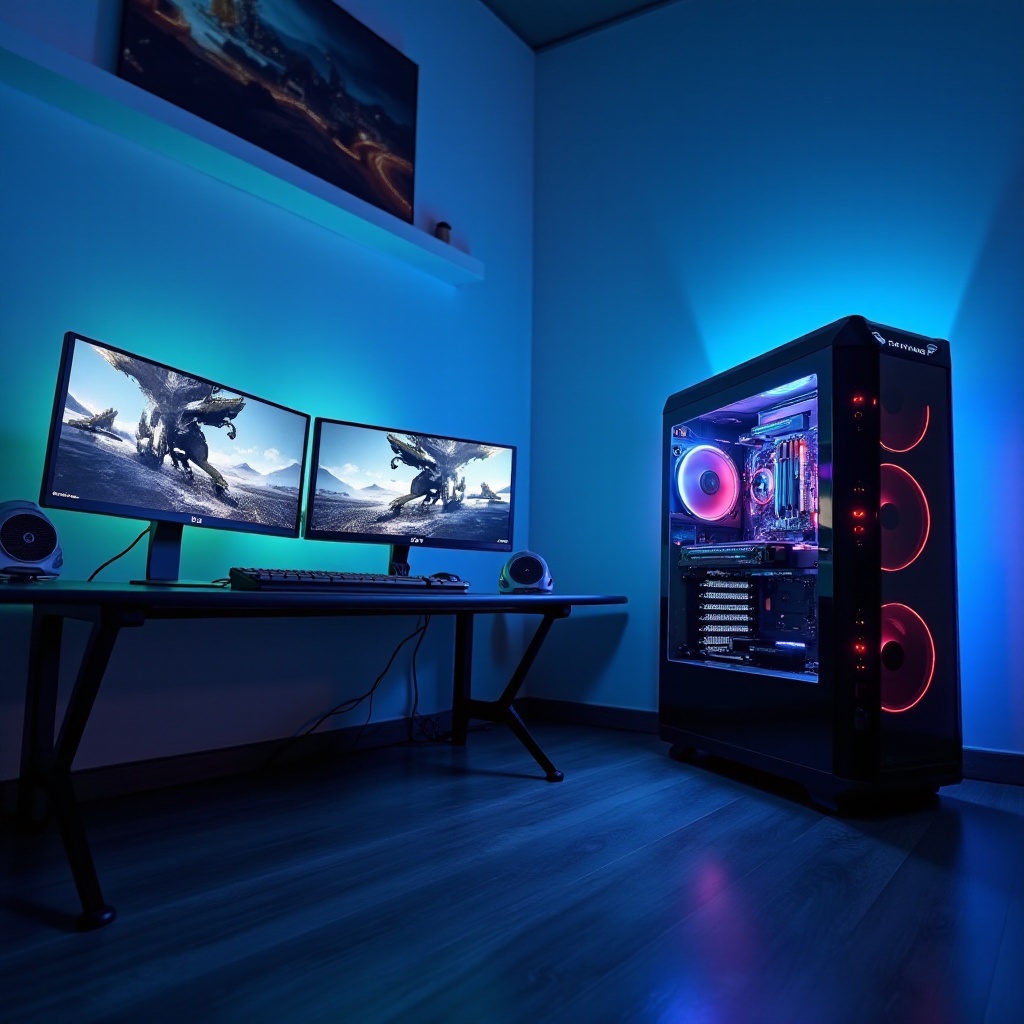
Introduction
The world of gaming and digital experiences thrives on performance, with frames per second (FPS) often serving as the ultimate benchmark. Understanding FPS is crucial for gamers aiming to enhance their gaming environment. Higher FPS results in smoother animations and quicker response times, crucial for competitive gaming.
FPS varies based on several factors, including the hardware specifications and the software capabilities of a system. It reflects how well a computer can display sequences of frames, offering a seamless visual experience. But what really constitutes the upper limits of FPS that have been recorded?

Understanding FPS in Computing
Definition and Importance of FPS
Frames per second (FPS) measures how many images or frames your device displays each second. The higher the FPS, the smoother the gameplay or video content. For most casual users, a steady 30 FPS can suffice. However, gamers and professionals often chase higher FPS for a superior experience. This pursuit for higher FPS ensures a more immersive, realistic interaction with digital environments, enhancing reaction times and visual accuracy.
How FPS Influences Gaming and Simulations
In gaming, high FPS translates to better performance, minimizing lags and visual stutters. Games running at higher FPS offer better visual clarity and a competitive edge by ensuring player actions are executed in real time without delay. Simulations, like virtual reality, also benefit significantly as higher FPS reduces motion sickness and increases immersion—key factors in industries like training or education.
Hardware and Software Factors Affecting FPS
To fully grasp how FPS can be maximized, it’s essential to delve into the hardware and software elements that contribute to rendering frames efficiently.
Impact of Graphic Cards and CPUs
The graphics card, or GPU, is pivotal in determining FPS. More powerful GPUs render graphics faster, allowing the display of high FPS. CPUs, while less directly influential, also play a substantial role. A fast, multi-core CPU helps manage game logic and processes, preventing bottlenecking that could lower FPS. Together, they underpin the entire frame rendering process.
Role of Monitors and Refresh Rates
A monitor’s refresh rate must match or exceed the FPS to fully utilize the higher frame rates. If a GPU delivers 120 FPS, but your monitor only supports 60Hz, you’ll effectively see only 60 FPS. High refresh rate monitors (like those supporting 144Hz or more) capitalize on GPUs delivering higher FPS, eliminating screen tearing and providing fluid visuals.
Software Enhancements and FPS Uncap Methods
Software factors, such as game engine optimizations and driver updates, also affect FPS. Developers optimize game code to balance aesthetics with performance. Additionally, various tweaks and hacks in settings can lift FPS caps imposed by software, allowing hardware to reach full potential.
Historical Progress: Breaking FPS Records Post-2024
The journey to achieving record-breaking FPS has been fueled by relentless technological advancements and the ambition to push boundaries.
Advancements in PC Gaming Technology
The years following 2024 have seen significant advancements in gaming technology that have led to record-breaking FPS statistics. Cutting-edge GPUs and processors from industry leaders such as NVIDIA and AMD have pushed performance boundaries, with manufacturers constantly improving their hardware to meet the demands of next-gen gaming and professional rendering.
Real-World Cases of Record-Breaking FPS
Some overclocking enthusiasts have achieved phenomenal FPS through extreme measures. Utilizing advanced cooling systems, these individuals have pushed setups to deliver FPS figures previously deemed impossible. In certain controlled settings, FPS upwards of 1000 have been recorded, specifically with lighter, older titles or custom demos designed solely for benchmarking.
Techniques for Achieving Maximum FPS
Mastering the techniques to achieve the highest FPS involves a delicate balance of tuning both hardware and software aspects.
Advanced Overclocking Techniques
Overclocking is when you increase the operating speed of your hardware components beyond the manufacturer’s specifications. When done correctly, this can significantly boost FPS. Techniques include manually adjusting BIOS settings for CPUs and GPUs or using software for precision control of clock speeds. However, risks include overheating, especially without proper thermal management.
Benchmarking and Testing Tools
Tools like FRAPS, MSI Afterburner, and GPU-Z assist in benchmarking FPS and monitoring system performance. These tools provide real-time FPS data, allowing users to fine-tune their setups. Regular benchmarking helps identify the most effective overclocking settings and confirms stability across new configurations.
Efficient Cooling and System Stability
Achieving the highest FPS places immense stress on hardware components. Proper cooling solutions—air, liquid, or hybrid—are essential to dissipate heat and maintain system stability. This ensures safe overclocking and extends the lifespan of components, avoiding thermal throttling that could negate FPS gains.

Benefits and Limitations of Ultra-High FPS
Understanding the balance of benefits and drawbacks of ultra-high FPS helps evaluate its true value.
Enhancements in User Experience
High FPS improves visual fluidity, offering a smoother and more responsive experience. This enhancement is invaluable in competitive esports, where milliseconds matter. Beyond gaming, professional fields like video editing and 3D rendering see productivity boosts with faster frame processing times.
Challenges of Diminishing Returns
However, not every application benefits from ultra-high FPS. Beyond a point, the human eye struggles to perceive differences, making further improvements less impactful. Additionally, pursuing maximum FPS can lead to exorbitant costs and diminishing returns, where investments in top-tier equipment offer little additional gain in experience.
Future Trends in FPS Technology
Gazing into the future shows a path lined with both hardware and software innovations poised to redefine FPS capabilities.
Innovations in Upcoming Hardware
Looking ahead, the promise of new graphics technologies such as ray tracing and AI-enhanced rendering continues to drive FPS improvements. Hardware manufacturers are constantly pushing the envelope, introducing GPUs with even higher performance capabilities, promising to redefine visual realism and interactivity.
Expected Software Developments
Game developers are also poised to take advantage of these hardware advancements, with engines and applications optimized further for higher FPS. Particular focus is on cloud gaming and VR, where low latency and high FPS are paramount for a seamless user experience. Future technology promises not only higher FPS but also smarter utilization of frame resources.

Conclusion
Exploring the boundaries of FPS on PCs reveals a blend of engineering and innovation driving this metric forward. While record-breaking FPS is often achieved under extreme conditions, the lessons learned filter down to everyday users seeking smoother gameplay. The future of FPS is bright, heralded by advancing technologies promising even greater performance.
Frequently Asked Questions
What is considered a good FPS for most games?
60 FPS is often viewed as the sweet spot for most gamers, offering smooth visuals without demanding exorbitant hardware investments.
How can I increase the FPS on my current PC setup?
Enhance your setup by adjusting game settings, updating drivers, overclocking components, and utilizing benchmarking tools to optimize performance.
Is there a point where increasing FPS no longer benefits gaming?
For most players, achieving ultra-high FPS beyond 120-144 marks offers diminishing returns, as human perceptive abilities plateau beyond this range.
